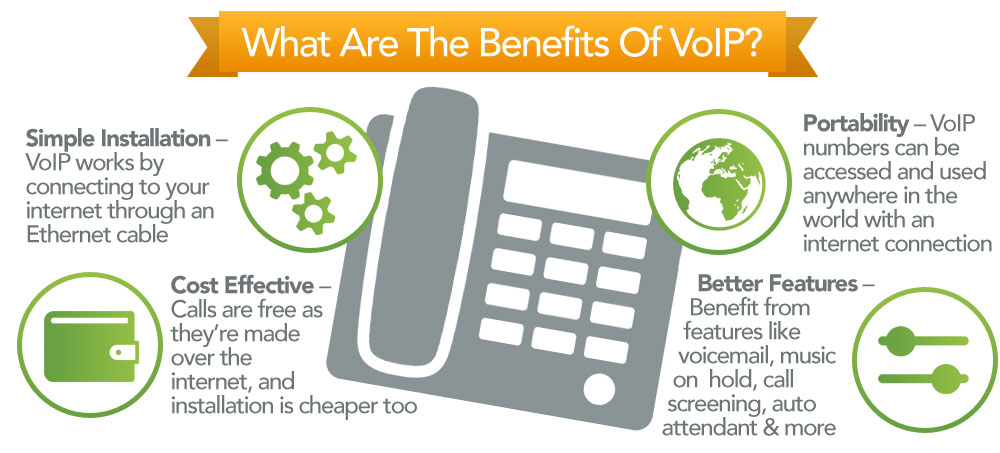What's the difference between VoIP and AoIP?
CIE’s HowToAV.tv explains the difference between VoIP and AoIP and how it is currently used in the telecoms industry...
As an increasingly popular method of listening to audio, streaming Audio-over-IP (AoIP) is regularly used by broadcasting companies and throughout the telecommunications world to provide high-quality audio feeds over a great distance. This is possible due to the use of an internet protocol (IP) network, in place of a traditional connection.
This application has also been known as audio contribution over IP (ACIP), which is a reference to the programming contributions made by field reporters and during remote events. Typically, audio quality and the risk of latency are the biggest issues for AoIP.
However, AoIP and the increasingly popular VoIP (Voice-over IP), are being used in a range of ways, and they are increasingly being applied to non-telecommunication applications throughout a variety of industries.
In this section:
- How Is VoIP Currently Used In The Telecoms Industry?
- VoIP In Non-Telecom Industries?
- VoIP For Public Addresses?
- What Are The Differences Between AoIP and VoIP?
- But What Is AoE?
- What Are The Key Benefits To Network Distribution Sound?
How Is VoIP currently used in the Telecoms Industry?
It was realised, around twenty years ago, that the costs of telephone calls could be drastically reduced, or even made completely free, so long as the call took place through the internet. This was particularly useful for international calls, as it allowed people and businesses to avoid the long-distance charges such calls would require.
Of course, back in those days, the technology was still in its infancy as the sound quality and reliability of the service made it impractical for important business use.
Over the years, as the demand for it has grown, VoIP has developed and improved and is now one of the most essential forms of communication between businesses from all over the world. In fact, it is the driving technology behind services such as Skype. In these days, most businesses use dedicated IP networks to carry their calls from one part of the world to another.
VoIP has proven to be so much cheaper for businesses that internal phone systems are continuously being replaced with IP-based alternatives. As another fantastic way of cutting down on costs, VoIP can also utilise much of the same cabling infrastructure and hardware as an existing data network. The traditional analogue telephone line can easily be abandoned in favour of the more efficient, cheaper and simpler VoIP alternative.
Whilst many businesses still prefer it, you don’t necessarily need to have dedicated handsets on your desk anymore. Calls can be made with a soft-phone on your computer, or even on a mobile phone via certain applications. This makes the system particularly flexible, as telephone extensions can be easily transported or adjusted.
VoIP in non-Telecoms industries?
There are an increasing amount of examples which show VoIP being used in industries which aren’t related to telecommunications. For example in the security industry, both door entry systems and intercoms are utilising VoIP technology. Much like in the telecoms industry, the benefits of VoIP result in lower costs, as the devices can utilise exactly the same infrastructure as existing data networks.
They also have the added functionality that allows them to contact VoIP telephones and applications, rather than a dedicated door-access telephone. By positioning IP cameras in the intercoms, you can also see who is at the door before they speak. Thanks to the wonderful advantages offered by IP technology, all of these added functions can be enabled through a single data cable!
IP systems are far easier to integrate with each other than analogue or traditional alternatives, as they will all interact with one another over the same network. In fact, by adding this functionality, you can allow a system to open the door, switch a light on, email a picture of the person coming through the door and even activate the heating or air conditioning.
VoIP for Public Address systems?
When using conventional PA systems, it is a very complex and expensive procedure to send announcements to different sites. Whether they’re across the road, across the country or even on the other side of the world, it is just as difficult to ensure the same announcement is heard at the same time.
However this has changed with VoIP technology, as you can make an announcement from wherever you are, via a VoIP device, and broadcast your message across the internet through a network connection. The only limitation for VoIP is that due to its reduced sound quality, it is only useful for speech. If you wanted to broadcast clear music or high-quality generalised audio, then you’d need to make the most of AoIP instead.
What are the differences between AoIP and VoIP?
The major differences between these two applications revolve around the sound quality that they provide. VoIP, for example, has been in use for around twenty years and is essential for the transference of speech or telephone audio quality across an internet network.
AoIP has been designed to provide the very best audio quality. This includes applications such as voice reinforcement, background and foreground music and even by internet radio stations. However as it provides higher quality sound, AoIP requires more bandwidth than VoIP, which makes it unsuitable for many applications, particularly for portable devices.
What is AoE?
AoE stands for Audio over Ethernet, and is best used for dedicated audio networks were a low-latency and an extremely high-quality audio is needed. The audio that is broadcast is received with extremely little or no compression and the audio latency is kept to a minimum.
As this is a development within the AoIP, this high-quality sound will require a much greater proportion of audio bandwidth. In fact, the primary locations where AoE is used are in stadiums and venues, where latency needs to be extremely low and the quality as high as possible.
What are the key benefits to network distributed sound?
With network distributed sound systems, the distance between system components and specific audio devices such as microphones, amplifiers and speakers remains unlimited by older analogue technologies and cables. The microphone, for example, could be in one building and the speakers could be miles away!
This works extremely well for a distributed sound system. Rather than having a large PA system in one central location, with a great deal of equipment and cabling running to and from it, you can now put specific equipment much closer to where it is needed.
This can be hugely beneficial to a large site, with multiple buildings. Each building could practically house its own amplifiers, which would drive the speakers, which would drastically cut down on the cabling across the entire site.
On some systems, the amplifier itself may not even be required. Thanks to the latest innovations in telecom technology, you could feature speakers which have AoIP receivers built into them. This allows the audio signal to be sent straight from the speaker to the network itself.
In fact, there isn’t even a need to separate traditional audio devices such as CD players, MP3 players and digital messaging stores. With an AoIP system, you could send audio directly from a PC across the entire IP network.
Want help with your next Network AV system design?
CIE is one of the UK's leading and most innovative professional AV distributors and are widely accepted as the experts in commercial sound systems design and supply.
Our professional system design team provide a unique AV system architecture service for installers and integrators to help you deliver the best in public address, background music and professional AV systems.
If you would like to discuss your next AV system or would like more information on the latest audio visual products, please call our team today on T. 0115 9770075 or email us now.
 Got a question for CIE's HowToAV team?
Got a question for CIE's HowToAV team?
HowToAV.tv provides a whole host of tips, tricks and technology know-how for the professional audio visual industry.
If you have a question for our AV experts, please contact us now.
Subscribe to our YouTube channel now at howtoav.tv for all the latest video casts or send us your questions to [email protected]









